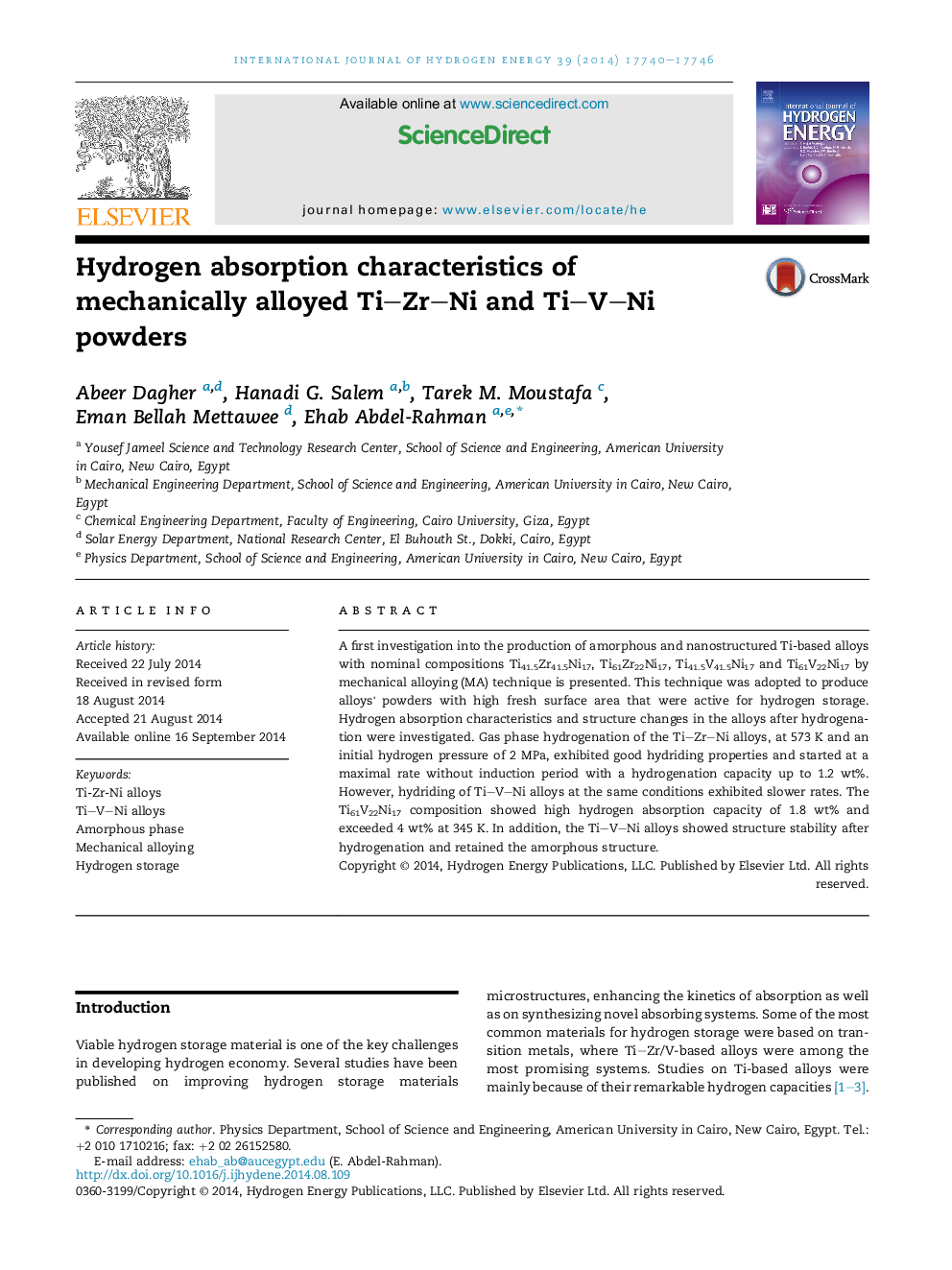| Article ID | Journal | Published Year | Pages | File Type |
|---|---|---|---|---|
| 1271870 | International Journal of Hydrogen Energy | 2014 | 7 Pages |
•Ti-based alloys were synthesized by mechanical alloying.•Gas phase hydrogenation of the Ti–Zr–Ni alloys showed good hydriding properties.•Hydrogenation of the Ti41.5Zr41.5Ni17 composition showed the highest rate.•Hydrogenation of the Ti61V22Ni17 alloy showed the highest hydrogenation capacity.
A first investigation into the production of amorphous and nanostructured Ti-based alloys with nominal compositions Ti41.5Zr41.5Ni17, Ti61Zr22Ni17, Ti41.5V41.5Ni17 and Ti61V22Ni17 by mechanical alloying (MA) technique is presented. This technique was adopted to produce alloys' powders with high fresh surface area that were active for hydrogen storage. Hydrogen absorption characteristics and structure changes in the alloys after hydrogenation were investigated. Gas phase hydrogenation of the Ti–Zr–Ni alloys, at 573 K and an initial hydrogen pressure of 2 MPa, exhibited good hydriding properties and started at a maximal rate without induction period with a hydrogenation capacity up to 1.2 wt%. However, hydriding of Ti–V–Ni alloys at the same conditions exhibited slower rates. The Ti61V22Ni17 composition showed high hydrogen absorption capacity of 1.8 wt% and exceeded 4 wt% at 345 K. In addition, the Ti–V–Ni alloys showed structure stability after hydrogenation and retained the amorphous structure.
